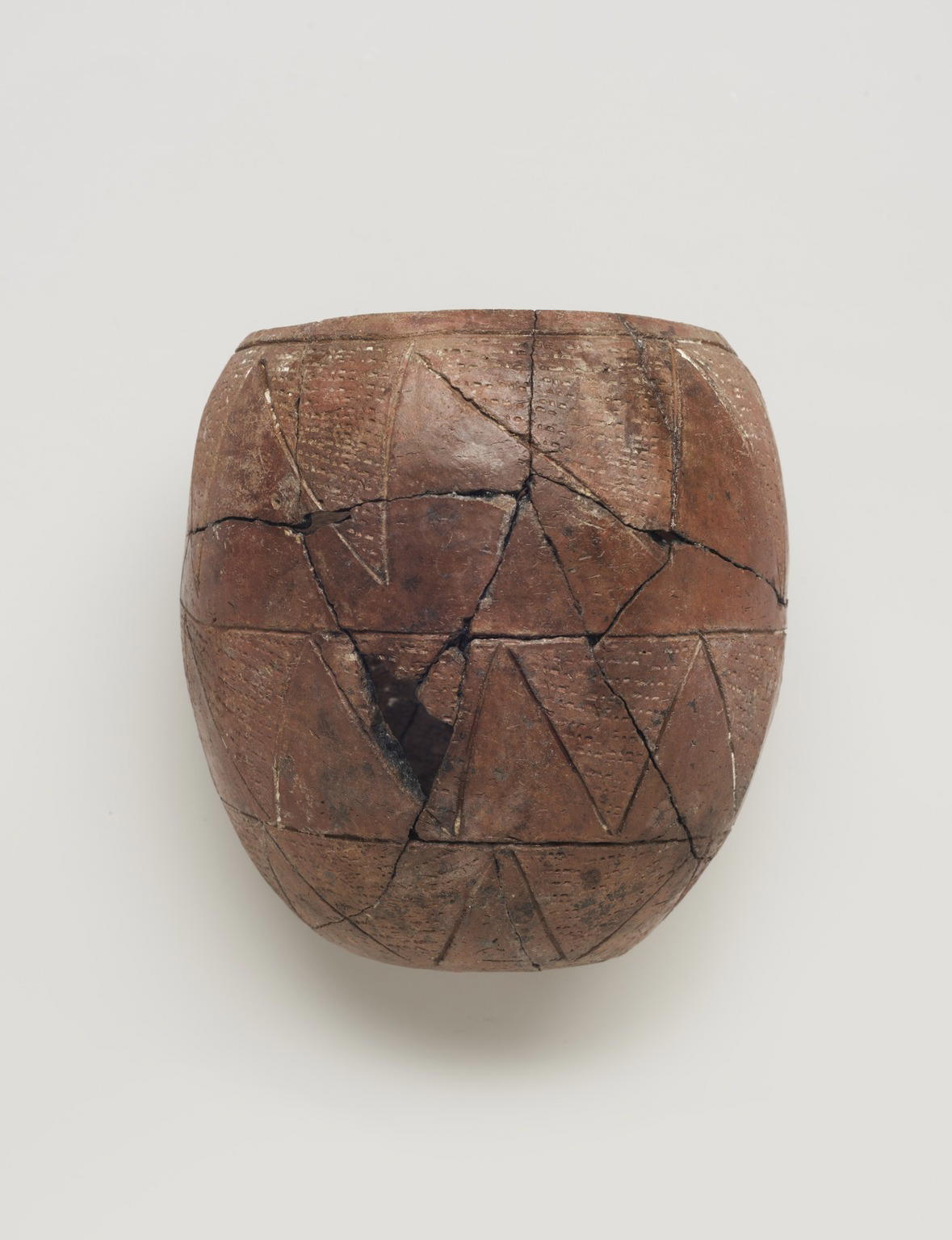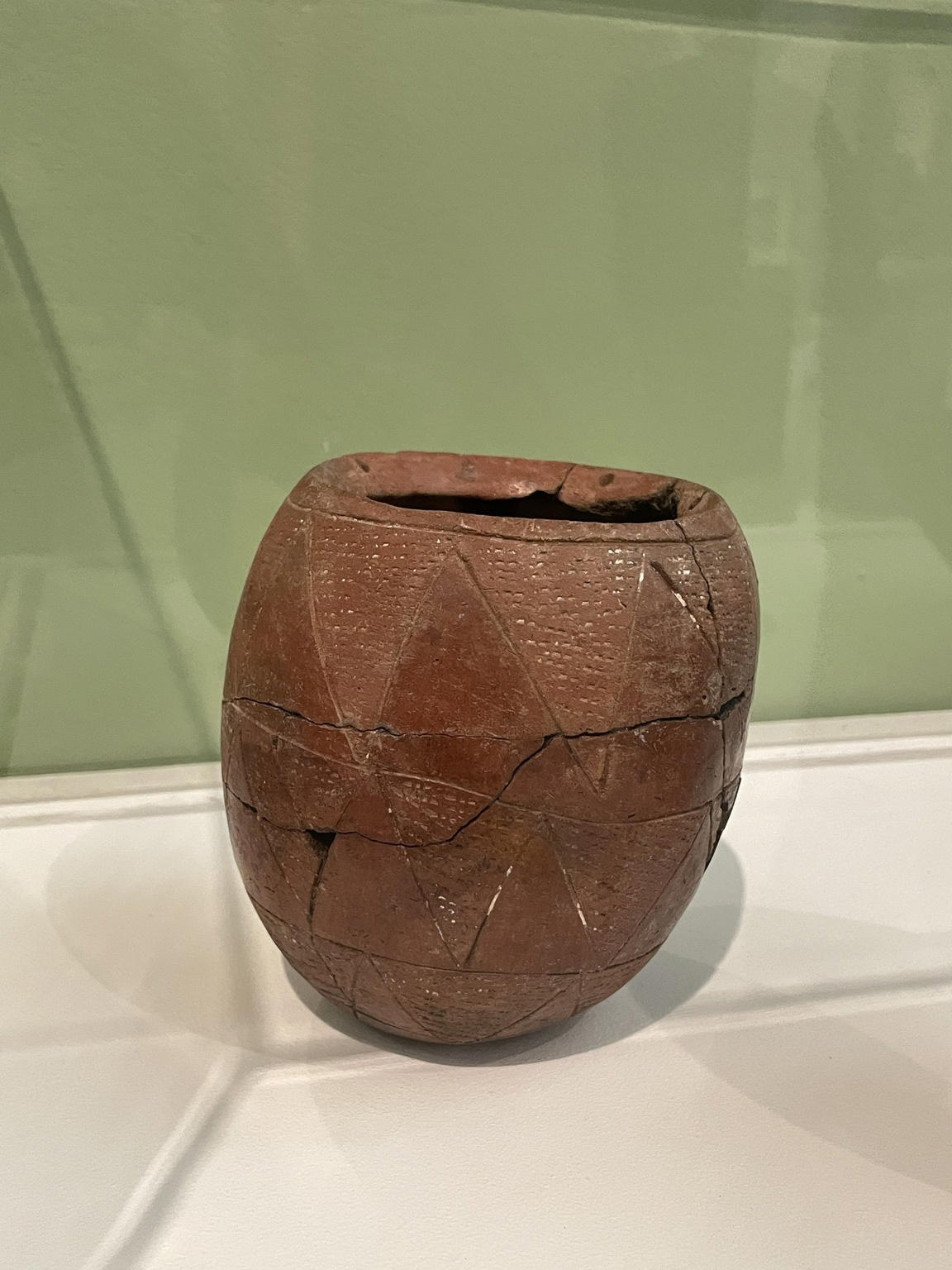Jar with Impressed and Incised Decoration
1 of 5
Object Label
Early Nubian potters often decorated vessels with two or three rows of geometric shapes, usually triangles or squares. Sometimes they added a rhythmic design, as in this example, by using a pointed tool to create dots and dashes.
Caption
Jar with Impressed and Incised Decoration, ca. 3300–3100 B.C.E.. Clay, paste, 5 1/16 x diam. of mouth 3 in. (12.8 x 7.6 cm). Brooklyn Museum, Charles Edwin Wilbour Fund, 09.889.445. (Photo: Brooklyn Museum)
Title
Jar with Impressed and Incised Decoration
Date
ca. 3300–3100 B.C.E.
Period
Predynastic Period, Naqada III Period
Geography
Possible place collected: Mezaideh, Egypt
Medium
Clay, paste
Classification
Dimensions
5 1/16 x diam. of mouth 3 in. (12.8 x 7.6 cm)
Credit Line
Charles Edwin Wilbour Fund
Accession Number
09.889.445
Have information?
Have information about an artwork? Contact us at




